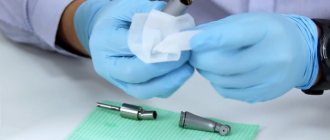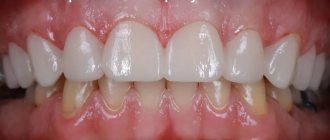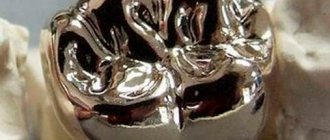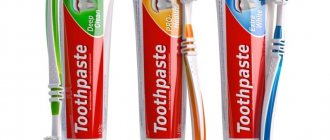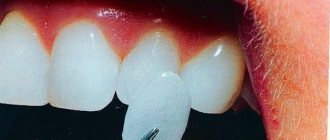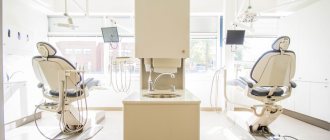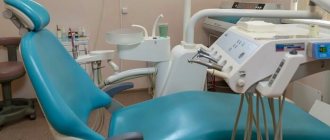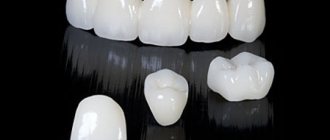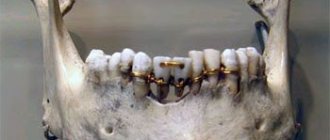Rational and competent choice of dental burs
Dental burs are used for various types of work related to hard dental tissues, as well as the treatment of caries and orthopedic structures. You can buy dental burs from a wide range of products.
When you contact us, qualified specialists will answer your questions and tell you what priorities you should pay attention to when choosing the right dental burs.
Classification of dental carbide burs and other types of rotary instruments
Based on the type of materials used, rotating instruments are divided into dental diamond burs, steel, carbide, carborundum, and silicone. Each of these types is intended for professional performance of certain types of work.
Depending on the selected tip, dental burs are classified into 3 types, which in turn differ in diameter:
- straight - 2.35 mm;
- corner – 2.35 mm;
- turbine - 1.6 mm.
Burs also vary in length; by contacting our company, you can fully count on professional assistance in choosing high-quality dental equipment.
If we talk about shade markings, then in accordance with current ISO standards, rotary tools are divided according to the color of the marking:
1. Black – for use at the 1st stage of preparation.
2. Green, blue - for precise and subtle giving of the required shape.
3. Red – for final formation of cavity/bevels (only on carbide/diamond bur).
Burs in therapeutic dentistry
In this area, wheel-shaped, cone-shaped, pear-shaped, spherical burs, differing in the size of the working part, are most often used. As a rule, burs intended for therapeutic dentistry have a head diameter of 1-3 mm. But, in practice, there are smaller/larger tools.
Burs in surgical dentistry
This type of instrument is used for preparing bones, hard dental tissues, removing root remains, and separating impacted/dystopic wisdom teeth.
Thanks to a decent level of performance characteristics, surgical burs allow dental procedures to be carried out with particular care and precision. The diameter of the working part of this tool can be from 1.6 to 2.7 mm.
The choice of burs also depends on the type of dental treatment being performed:
- enamel preparation – carbide/diamond with turbine working area;
- when working with deep cavities, use spherical steel burs;
- finishing processing of fillings made of composite material - diamond rotating tools, characterized by fine grain;
- preparation of dentin - it is recommended to use large carbide pear-shaped/spherical burs.
From us you can also buy NTI burs, which are manufactured by a German manufacturer that adheres to an automated process and the use of modern High-Tech innovations.
If you need to buy MonAlit burs, which are famous for their strength, performance and long service life, then we suggest using the contacts provided.
Notes from a practitioner on carbide burs
Abakumov Sergey Ivanovich, dentist, orthopedist of the highest qualification category, Voronezh, regional clinical dental clinic
In the daily practice of a dentist, one has to deal with various works on the preparation of teeth and various materials (composites, amalgams, metals, etc.). The most common are burs with applied diamond chips. But such a surface is not durable when in contact with hard surfaces, and when preparing soft materials it quickly becomes clogged and cutting efficiency sharply decreases. Carbide burs are more adapted to these conditions.
The use of carbide burs in the practice of orthopedic dentistry:
• Dental treatment - “Great White Ultra” series from SS White Burs, Inc. A double notch on the cutting surface, a long working surface and a reinforced bur neck make it possible to carry out rough processing of the coronal part of the tooth and at the same time, thanks to the specially treated surface of the bur tip, to form a ledge zone.
The olive-shaped shape of the “Great White Ultra” series burs makes it easier to treat the chewing surface of the tooth.
• When removing crowns of various thicknesses - from stamped to solid-cast - burs of the “GW-II” series are indispensable. A narrow metal cutting zone allows you to reduce the load on the tip, reduce heat generation, and carefully approach the cervical area with minimal trauma to the marginal periodontium. (Fig.1)
• It is convenient to remove old fillings (amalgam, composite, cement, plastic) using burs of the “GW-II”, “Great White Ultra” series.
• If it is necessary to carefully perforate metal-ceramic crowns for subsequent treatment (and this happens with complications of prosthetics - pulpitis or periodontitis under the crown, when removal of the crowns is undesirable for one reason or another). First, a layer of ceramics is removed down to the metal along the chewing surface with a diamond bur, and then the metal and dentin are perforated with a “GW-II” series bur until the pulp chamber is opened. The good cutting ability of the bur allows you to easily perforate the crown without cracking the ceramic along the edge of the hole (of course, all operations are carried out under water cooling).
• When repairing chipped ceramics on metal-ceramic prostheses, in cases where removal of the prosthesis is impossible, it is more convenient to treat the metal surface in order to apply retention using burs of the “GW-I, II” series, followed by sandblasting.
• In case of removal of fragments of anchor pins (brass) in the tooth channel, burs of the “GW-I, II” series are irreplaceable. Such complications in the form of a fracture of an anchor brass pin have recently occurred frequently, as an echo of their universal use (Fig. 4). It is difficult to remove such fragments with ultrasound, since the surface of the brass fragment is quite soft, and the fixing cement is more rigid. When using ultrasound, metal breaks down earlier than cement (Fig. 5). Unscrewing, due to the same softness, is impossible, which leads to breakage in an even deeper place (Fig. 6). Drilling with the cutting tip of a bur of the “GW-I, II” series allows you to solve this problem, only sometimes the length of the bur shank is not enough, if there is a long anchor, then “Great White Ultra” (856-016) will come to the rescue.
• It is convenient to treat the surface of the cast core inlay and the tooth-onlay joint, after its fixation in the tooth, with burs of the “GW-II”, “Great White Ultra” series.
• If it is necessary to correct the position of the titanium implant abutment, both in the mouth and on the model, the use of burs of the “GW-II”, “Great White Ultra” series with sufficient cooling allows you to carry out the necessary manipulations without overheating and vibration (of course, within reasonable limits) (Fig. 3).
• When processing the stump of a tooth restored for prosthetics using a titanium anchor pin, when there is a need to shorten the protruding part of the anchor head, burs of the “GW-II”, “Great White Ultra” series are indispensable, since diamond burs instantly “bald” upon contact with titanium (Fig. 7).
• In the case of supercontact on the inner surface of the crown of a solid-cast prosthesis, when fitting it, especially on living teeth, the use of burs of the “GW-II”, “Great White Ultra” series allows you not to use anesthesia for additional tooth preparation, but to precisely grind this place (Fig. .2). When fitting the frame of a solid-cast prosthesis in cases where the interdental papilla is infringed, it is convenient to free up this space using the same turbine carbide burs. You can, of course, use a carbide cutter for a straight tip, but it’s easier to use a carbide bur in a turbine tip, which is always at hand.
• Spot processing of metal when fitting a clasp prosthesis is conveniently carried out using burs of the “GW-II”, “Great White Ultra” series (Fig. 8).
• After fixing ceramic inlays, onlays, veneers, excess fixing composite can be easily removed using 10-sided “Safe-End” burs, and final polishing of the border is carried out with 20-sided “Safe-End” burs. Thanks to the safe, inactive bur tip, it does not injure the enamel surface of the tooth and the marginal periodontium when treating the tooth surface. The surface of the ceramic restoration is not damaged by the working edges of the “Safe-End” 10-20-sided carbide bur.
In general, it is difficult to imagine working without carbide turbine burs. Remember what you used to cut the crowns: vulcanite discs, carbide saw-cutters for a straight tip, crown scissors. And how many complications and dangers lay in wait for the breakage and clamping of such instruments, fractures of the crown part of the tooth. With the introduction of turbine handpieces and corresponding tools to the market and into everyday work, the quality and culture of the dentist’s work have improved. Burs of the “Great White Ultra” series from SS White Burs, Inc. among carbide burs, can be compared with Hummer cars, taking into account their capabilities and country of origin.
Rice. 1 — Example of cutting a crown using a “GW-II” series bur
Rice. 2 — Correction of supercontact inside a metal crown using a “GW-II” series bur
Rice. 3 — Correction of the position of the implant abutment in the oral cavity
Rice. 4 - Fracture of the anchor pin in the tooth canal
Rice. 5 - Removing the anchor pin using ultrasound
Rice. 6 — Fracture of part of the anchor pin when trying to unscrew it
Rice. 7 — Treatment of a tooth stump with a titanium anchor pin using a “Great White Ultra” series bur
Rice. 8 — Correction of the clasp denture frame using a “Great White Ultra” series bur
Selection of diamond and carbide burs for medical practice
George Freedman, DDS Dr. George Freedman is a past president of the American Academy of Cosmetic Dentistry and Associate Director of the Esthetic Dental Education Center at the State University of New York at Buffalo. He is also director of post-graduate programs in Esthetic Dentistry at the University of California at San Francisco, University of Missouri (Kansas City), Eastman Dental Center (Rochester), university programs in Seoul, South Korea, London, England and Schaan, Liechtenstein and Scientific Chairman of the World Aesthetic Congress (London, England). Dr. Freedman practices in Toronto, Canada.
Most dentists do not think about the cost of one of the smallest instruments in the dental practice - the bur. These instruments seem insignificant in both size and cost when compared to other dental materials and routine dental office expenses. However, burs are a staple consumable in restorative dentistry. They are used daily in almost every procedure. It is therefore not surprising that the cost and effectiveness of burs can have a significant impact on the upper and lower bounds of a dental practice's costs.
The dentist can use the burs many times after sterilization, or use them just once for each patient.
Reusable burs are initially more expensive than disposable burs, however, their reusable use should reduce their cost per use. You should also consider the cost of pre-cleaning and sterilizing reusable burs, which are usually tedious and time-consuming procedures. Considering these hidden costs and the high initial cost of reusable burs, they often end up costing more per use than disposable burs.
On the other hand, disposable burs are always sharp, have more efficient cutting ability and work faster. Dentists who spend a significant portion of their workday preparing teeth for restorations know that improving the cutting efficiency of burs significantly improves their productivity, as well as dentist and patient comfort. Disposable burs are safer for patients (there is no risk of cross-contamination) and for clinic staff (there is no risk of being “injected” with a bur during their preliminary sterilization).
Both reusable and disposable burs vary greatly in cost. However, the most expensive boron is not always the best and most effective. The best way to check how a bur works is to try it in daily practice. This “test drive” allows you to evaluate the quality of the boron in a matter of seconds. The improved cutting ability of the bur is immediately recognizable and this justifies its increased cost (which is not always the case).
Saving a few cents by buying lower quality boron doesn't make much sense. Decreased preparation quality, increased preparation time, and overall decreased clinical efficiency cost far more than the small savings on bur costs.
Luckily, you can find high-quality burs at fairly low prices. It's just a matter of test driving burs that you think have the right design, shape, size and cost.
It is common for many dentists to stock too many different burs. Boron that has not been used even once in 12 months of work most likely is not needed at all. Standardizing preparation procedures using a limited number of bur types and shapes increases efficiency and reduces physician stress. Clinic staff can very easily determine which burs are used most often. It is these burs that then need to be made easily accessible, visible and replaceable. This simple procedure can significantly improve the efficiency of the clinic.
How to Read Buying Instructions
Carbide, diamond and polymer burs cannot and should not be compared with each other. This guide compares burs within these three categories. Certain burs are better suited to certain procedures. The choice of bur type depends on the physician's preference and the type of handpiece.
Type of bur: The main criterion when choosing a bur is the proven effectiveness of its cutting surface. Although some dentists use “only” carbide burs or “only” diamond burs, it is more practical to have both types of burs in the practice. For example, diamond burs leave a rougher surface, which improves adhesion. Carbide burs are faster, do not clog, and are more effective for cutting metal (for example, removing amalgam or cutting cermets).
Reusable and Disposable Burs: The choice of burs is one of the most important decisions a dentist will make when selecting instruments. Important parameters to consider when selecting burs include the initial and subsequent cutting efficiency of the bur, sterilization ability, and the cost and risks of sterilization. Modern sterilization techniques virtually eliminate the risk of cross-contamination. However, using a new bur for each patient is theoretically safer. When calculating the cost of reusable burs, it is necessary to take into account the risks of infection of clinic staff, the time spent by staff manually cleaning and sterilizing burs, as well as the cost of sterilization products. Often the total cost of reusable burs per use exceeds the cost of disposable burs.
Packaging: Packaging must be sterile and convenient. Packages containing a large number of burs take up less space and are more ergonomic. However, when removing one bur, care must be taken to maintain the sterility of the remaining burs. Packing burs one at a time is more convenient for disposable burs. Although burs are usually supplied ready to use, some surgical burs require additional sterilization.
ISO Certification: ISO 9001 certification is a voluntary audit process that manufacturers undergo. This means that independent experts have inspected the manufacturer's factory, process and manufacturing standards and found them to be up to date. Manufacturers who are not ISO certified may also have high quality products. They simply decided not to get certified.
Working or cutting surface of the bur: “Carbide” burs are made from a variety of materials. At one time, cutting surfaces were made of tool steel, a soft material that is easily subject to corrosion. Then stainless steel was introduced, a harder and more corrosion-resistant material. Modern carbide burs have a tungsten carbide cutting surface that is soldered or welded to a stainless steel shank. The shape of the tungsten carbide blade determines the function and cutting efficiency of the bur. "Diamond" burs consist of fine diamond chips or particles that are glued or bonded to a preformed stainless steel shank.
Non-working length: When preparing posterior teeth in patients with limited mouth opening or in children, burs with a short non-working part are popular. Longer stems are required for surgical and endodontic access. The correct choice of the length of the non-working part of the bur makes the doctor’s work easier. Most burs come in a variety of handpiece formats for all types of handpieces: low-speed (straight and angled) and high-speed. A wide range of bur shapes and sizes makes them easy to use for an ever-increasing number of different dental procedures.
Particle size: Diamond burs are available in various dispersions from super-coarse to ultra-fine. Unfortunately, there is no industrial standardization for determining the size of diamond particles. Usually, super-coarse dispersion means a particle size of 100-150 microns (or more), and ultra-fine - 10 microns. All intermediate classifications - large, medium, small and extra small - are within these boundaries. To select boron dispersion, it is better to rely on numerical indicators rather than on verbal classification.
Burs with greater fineness are most effective for quickly removing underlying tooth structure. Fine burs are designed for shaping restorations, polishing or treating the tooth surface to improve adhesion. The different dispersion of diamond burs provides the doctor with the most complete set of tools.
Bur Surface: Carbide burs are available in a variety of cutting and polishing formats. Surgical and crown cutting burs have 4 to 8 sharp cutting angles which, when the bur is rotated at several thousand revolutions per minute, removes a small amount of material with each rotation. The aggressiveness of burs depends on the shape and angle of inclination of the cutting surfaces. Carbide finishing burs have more cutting surfaces (or grooves) that are deeper and less aggressive. The most typical carbide finishing burs have 12 and 30 grooves. 12-flute burs remove the finest layers of tooth structure, while 30-flute burs are used only for polishing restorations.
Adhesion of diamond particles: There are a large number of different technologies for adhesion of diamond particles to the metal bur leg. “Single-layer adhesion” involves applying one layer of diamond particles to the surface of the steel burr leg. During preparation, diamond particles, which are harder than tooth tissue and dental materials, are torn away from the stem. The stronger the adhesion of diamond particles to the bur stem, the longer its effective service life. “Double-layer adhesion” and other techniques have been developed to reduce the detachment of diamond particles during burring. This characteristic is of particular importance for more expensive diamond burs for cutting reusable artificial crowns and bridges.
Types of payment: The doctor can buy burs through dealers or directly from the manufacturer. Each of these paths has its own advantages. Buying burs in bulk directly from the manufacturer provides great price advantages. Dealers have a large selection of burs available at short notice.
DIAMOND BURS
AXIS Dental
All NTI Diamonds diamond burs are manufactured using Unimatrix adhesive technology. The Unimatrix system is a single adhesive matrix consisting of layers of diamond particles located at a strictly defined distance from each other, exposing the maximum number of cutting edges. Unimatrix adhesive technology provides increased retention of diamond particles at the bur tip and along the edges and minimizes bur clogging during preparation, which reduces heat generation during operation and increases bur life. True concentricity eliminates vibration and reduces turbine tip wear. NTI Diamonds diamond burs have highly polished stainless steel legs that will not corrode during the sterilization process. Brasseler USA
Brasseler USA is a leader in quality diamond instruments with years of experience bringing the right products to your clinic or laboratory. The company pays great attention to careful quality control of diamond tools. Special attention to detail ensures superior cutting performance day after day. The dense distribution of diamond particles across the entire working surface of the bur is critical to its cutting efficiency, reducing heat generation during operation and increasing the accuracy of preparation. The diamond particle distribution method, which has been perfected over years of production, ensures the consistency of the quality you demand. Coltene/Whaledent
Alpen Diamonds diamond burs offer increased cutting performance, longer service life and a wide range of shapes and sizes (more than 700). Alpen Diamonds burs are manufactured using a layered natural diamond deposition process that ensures maximum uniform coverage of diamond crystals, increasing the bur's cutting performance and service life. Alpen Diamonds burs are available in a variety of sizes, fineness and shapes, including a spiral design. In addition to coarse and super-coarse burs, Alpen Diamods burs of fine, extra-fine and ultra-fine are available.
Cutting Edge Instruments
CEI FG diamond burs are made from ground and honed Swiss steel. Multi-layer diamond coating and uniform adhesion systems provide high cutting efficiency and long bur life. The bur legs are hardened and honed for a very smooth cut with minimal vibration, greatly increasing the life of the turbine tips. Burs are available in popular sizes, shapes and dispersions to suit all your needs.
Dental Film Club
KUT Diamond Burs are made from natural diamonds and one of the best steel shanks available in the international market. They exceed ISO standards for diamond rotary tools and are CE Marking and FDA certified. KUT diamond burs are distinguished by high cutting accuracy, excellent work efficiency and an affordable price.
Dentsply Professional
Made from natural diamonds that have more cutting surfaces, Midwest Diamond Burs feature a multi-layer diamond coating for faster, more efficient cutting and longer life. Midwest diamond burs are available in 7 grit sizes (from ultra-fine to ultra-coarse) and over 80 unique shapes, for a total of over 500 diamond tools. Each bur is individually quality tested to ensure high standards and ensure uniformity of coating for optimal concentricity and efficient cutting performance. The quality control of diamond tools is maintained to the same exceptional level for both Midwest burs and Midwest tips.
Garrison Dental Solutions
G-Force burs are manufactured using patented solder technology using diamond crystals of uniform shape, located at the optimal distance from each other. This combination provides a uniform and concentric cutting surface on the bur, with more crystals in contact with the tooth surface. G-Force burs are distributed in the United States only by Garrison Dental Solutions and a network of dealers worldwide.
Kerr
Independent evaluations have recognized the increased cutting efficiency and reduced clogging of BluWhite diamond burs compared to other diamond burs. BluWhite Diamonds diamond burs offer high performance, as well as a wide range of shapes and fineness for all types of preparations. The BluWhite Diamonds line also features special finishing burs for composites to achieve optimal esthetic results. Comet USA
Komet USA diamond burs are available in 6 types of dispersion. Special diamond burs include S-Diamonds, Pin-Diamonds, Micro Prep Diamonds, ZR Diamonds and Turbo Diamonds. Pin-Diamonds diamond burs allow precise preparation of cavity margins. A non-diamond coated guide pin is used to control the horizontal and vertical design of cavity edges where visibility is limited. Micro Prep Diamonds ensure maximum preservation of healthy tooth structure during preparation. S-Diamonds have a patented stepped flat surface for fastest tissue removal. ZR Diamonds are indispensable in the dental laboratory and in the clinic for processing zirconium.
Meisinger USA
Meisinger produces diamond burs in sizes from ultrafine to ultracoarse and in different shaft lengths: FG, FG short, FG surgical, turbine, straight, contra-angle and surgical-length contra-angle. Multi-layer adhesive diamond coating technique ensures long service life and superior quality. The burs are manufactured according to the ISO 9001 standard, ensuring concentricity and dimensionality. Meisinger has burs available for occlusal tissue removal, zirconia, composites, ceramics, and endodontic access.
Microcopy
Enjoy the fresh cutting of a new, sharp diamond bur for each patient. Neo Diamonds save you time and money by increasing precision, efficiency and comfort of your preparation. They have the quality of reusable burs and now have a colored ring on the stem for quick identification of bur dispersion. 20 new forms and additional types of dispersion were added to the line.
Miltex
Miltex diamond burs are manufactured using a technology that ensures uniform coverage of 85% of the working surface of the bur with diamond particles. The Miltex line of diamond burs includes extra-fine, fine, medium and coarse burs. The burs have ISO colored rings on the stem to identify fineness and use the standard ISO numeric code system. Miltex burs are available in various shapes and sizes.
Parkell
Parkell offers friction-clamping diamond burs in 18 different shapes and finenesses. Originally intended for single use, they can also be sterilized for reuse. Each bur is available in a separate transparent sealed package. Diamond burs cost 99 cents and can be ordered in quantities of 50 pieces. one type of hog or 100 pcs. in assortment. If you are unsatisfied with the performance of Parkell diamond burs, you can call the company's toll-free number any time within a month of purchase and we will provide a full refund.
Premier Dental Products
Solo burs are sterile, disposable, quality electrolytic coated diamond burs. Available in all popular styles, including short stem lengths and 4 grit sizes, Solo diamond burs are ideal for cavity preparation, single crown and bridge preparation and finishing. Solo burs are made from natural diamond particles electroplated onto a stainless steel shank, providing fast, aggressive cutting, ideal for one-time use. The burs are available in boxes of 25 burs in individual sterile packaging, so that the doctor, if desired, can open the package in front of the patient. You can purchase Solo burs from your authorized dealer.
Premier Two Striper diamond burs, including the TS 2000 Fast Cut Spiral Diamond Bur, are manufactured in the USA with a patented diamond particle technology that is different from all other electrolytic coated burs. Two Stripes burs are recognized as the standard against which all other rotary cutting tools are measured. They are said to cut faster and generate less heat. When working with these burs, the doctor “feels” them, which increases control of the preparation and reduces patient discomfort. The patented manufacturing process optimizes the placement of natural diamond particles and ensures their constant adhesion to the surface of the surgical grade stainless steel stem. Premier guarantees that these diamond particles will not chip or wear off.
Prima Dental Group
Manufactured from the highest quality ISO stainless steel, Prima Classic Diamonds are multi-layered and densely coated with uniformly sized 100% natural diamond particles for a sharp cutting surface and consistent performance. The use of computer-controlled precision engineering ensures true concentricity and balance, which significantly reduces tip wear. Superior quality is the natural result of strict controls and 100% final inspection.
Sabra Dental Products
The balanced hardened steel shank ensures perfect concentricity of these diamond burs. A special electroplating process ensures strong adhesion of diamond particles to the steel leg, preventing chipping and abrasion, making them reusable. Burs are available in more than 110 different shapes and grain sizes, including extra-fine, fine, medium, coarse and super-coarse.
Shofu
Diamond burs Shofu Robot Diamonds Points. High-tech computerized robots produce diamond burs with solid steel legs that strictly meet ISO standards and ensure uniform distribution of natural diamond particles. Recognized by a leading independent standards body for their superior performance, cutting efficiency and minimal clogging, these burs come in a wide range of shapes and sizes. Recently, a new series of burs for minimally invasive preparation and 10 forms of super-coarse burs for removing large amounts of tissue and removing artificial crowns have been added to the line of standard, coarse, fine and superfine burs.
SS White Burs
Piranha diamond burs cut as quickly as leading reusable diamond burs, but at a fraction of the cost. Piranha offers a wide selection of disposable diamond burs. Try the new Piranha burs and experience the benefits of using fresh cutting tools every time. Also available is the Piranha 2X-turbo diamond bur, which cuts with less heat than other diamond burs and is ideal for removing large amounts of tissue.
Star Dental
The Nouveau line of diamond burs includes 130 burs for superior cutting and finishing. They have a two-layer diamond coating, which ensures rapid removal of tooth tissue and a long service life. Burs are made from natural diamond particles, which have better adhesion and aesthetics than man-made diamonds. Hardened stainless steel foot provides less wear and increased stability at high speeds. Burs are produced in various dispersions from extra-fine to coarse. DentalEZ Group has been donating a portion of profits from the sale of Nouveau burs to the Breast Cancer Association since 2006 and will continue donating in 2007.
Strauss Diamond Instruments
FG Strauss Diamond diamond burs have a Swiss-made precision-ground steel stem. Multi-layer diamond coating and HBN uniform adhesion system create a bur with high cutting efficiency and long service life. The bur shank is specially sharpened and hardened for very smooth rotation with minimal vibration, which significantly increases the life of the handpiece. Burs come in all popular shapes and sizes to suit all your needs.
Sullivan - Schien Dental
Maxima Diamond diamond burs are manufactured to the highest international quality standards. Precision bur shank technology and superior diamond particle adhesion system give you benefits such as fast cutting, minimal heat generation and true tool concentricity, which minimizes turbine wear and ensures patient comfort. Burs are available in packs of 5 pieces. and are color coded for easy identification. They have a solid steel leg and provide optimal performance with minimal heat generation.
CARBIDE BURS
AXIS Dental
AXIS Dental offers NTI carbide finishing burs in a variety of sizes and over 60 shapes to achieve optimal esthetic results. The one-piece design and sharp grooves of precision ground and tungsten carbide provide smooth, vibration-free cutting without applying pressure. AXIS Dental also offers a large selection of NTI carbide surgical burs in various shapes and sizes. NTI surgical burs have a strong connection between the cutting head and the steel leg, resulting in smoother, more precise cutting.
Brasseler USA
All Brasseler USA carbide burs are manufactured using precision manufacturing techniques and the highest quality materials. That's why Brasseler burs exceed industry standards, ensuring the highest quality in every single bur. Carbide finishing burs for composite materials are available in a variety of shapes and shank lengths. This allows you to select the right tool for fast and efficient processing and prepolishing of restorations with excellent results. From cavity preparation to bone surgery, Brasseler USA has a wide selection of instruments to suit your needs.
CJM Engineering
Whether searching for hidden canal orifices or removing broken instruments from root canals, Munce Discovery Burs avoid the expense, heat generation and breakage associated with ultrasonic instruments. The strong, narrow stem provides good control during deep preparations and the 34 mm length opens up a functional field of view, eliminating the need for blind work. The burs are available in 6 different head sizes.
Coltene/Whaledent
Alpen Carbids burs are a new complete line of high-performance solid carbide burs that cut faster, last longer, won't break at the stem-head interface, and won't rust. Test results have shown that Alpen's one-piece design provides cutting performance that is 300% superior to leading competitors' burs, longer life, reduced risk of breakage, and eliminates the possibility of rust. Three complete lines of Alpen carbide burs are available: operational and surgical, finishing and Speedster - a high-performance cutting bur. The Speedster bur is ideal for rapid dentin and enamel removal, amalgam removal and metal-ceramic removal.
Cutting Edge Instruments
Cutting Edge Instruments' carbide burs are optimally designed for today's high-speed handpieces. Their ultra-concentricity and smooth cutting ability reduce vibration and extend tip life. The burs have a solid carbide construction with no brazed or welded joints. The types available are FG, FGss, FGOS, RA, HP and T&F. The Barracuda is the flagship of the CEI line. It is ideal for the rapid removal of amalgam, ceramics, metal ceramics and enamel.
Garrison Dental Solutions
The G-Block finishing and polishing system consists of a hard anodized aluminum bur holder and 5 carbide burs, a conical diamond bur and two diamond polishing heads. The conical diamond bur provides ideal finishing and creation of the occlusal anatomy of composite restorations. The G-Block System can be used to process composite restorations on the labial surfaces of anterior teeth, Class III restorations, and Class I and II canine and molar restorations. The compact and durable bur container holds burs securely in place during sterilization and transport and is convenient to use. The system is sold both as a whole and in separate parts.
Henry Schein
Henry Schein Carbide Burs have a carbide tip for sharper, faster cutting. Special welding of burs reduces the risk of breakage. These versatile burs can be used for finishing restorations, preparation of straight restorations and crowns, root canals and many other procedures. They are available in various shapes and sizes. Each bur is individually packaged and sold in boxes of 10 or 100 pieces.
Kerr
BluWhite Carbides offer a full range of shapes and sizes, including specialty burs, to provide the clinician with all the tools needed to adequately prepare and process any composite restoration. No other bur provides such versatility and efficiency. BluWhite carbide burs are renowned for their superior cutting performance and reliability at an affordable price.
Comet USA
Komet USA offers a variety of specialty carbide tungsten carbide rotary instrument sets to suit all restorative dentistry needs. The H4MC and H4MCL crown cutting burs allow you to remove crowns, bridges and porcelain veneers quickly and easily. Micro Prep instruments remove carious tissue while preserving as much healthy tooth structure as possible. The slim design of their stem improves visibility of the working field during preparation. The new Revolution Carbides burs feature a unique blade design that allows for faster cutting with increased control and low vibration. This makes it possible to practically eliminate the possibility of iatrogenic creation of enamel cracks. Research has shown that using Q-Finishers for the initial finishing of composite restorations produces a smoother, more easily polished surface than the traditional three-step finishing technique.
Meisinger USA
Meisinger carbide burs are manufactured using traditional technology with stainless steel legs for concentricity, durability and sterilization requirements. The steel leg is welded to the carbide head to increase the strength of the bur and reduce the risk of breakage. Meisinger carbide burs are precision-machined grooves for sharp cutting and are available in a variety of shank lengths. Special burs are also available for crown removal, finishing, surgical procedures, laboratory, flexible plastics and titanium.
Microcopy
Precisely manufactured from tungsten carbide, NEO-BURR burs offer superior quality at a reasonable price. Individual packaging ensures maximum asepsis and convenience. Burs are available in various types: for preparation, cutting of crowns and finishing. Six new multi-groove finishing bur shapes and surgical-length contra-angle burs have also been added to the line.
Miltex
The Miltex line of carbide burs are specially designed for maximum strength and reduced risk of breakage. The bur leg is made of stainless steel, and the cutting head is soldered to the leg, which ensures high quality bur. Traditional Miltex carbide burs, pre-cut burs and finishing burs are available. The burs are available in individual, easy-to-open packaging, 5-packs, 10-packs, and the popular clinical pack. The Miltex line of finishing burs is designed for shaping and finishing all dental materials. They allow you to create a smoother and more aesthetic restoration surface.
Premier Dental Products
Premier Carbide Burs are designed for maximum durability and strength. FG surgical length burs, regular burs and contra-angle burs are available in a variety of shapes including ball, reverse cone, fissure, and tapered fissure. Evian Perio burs have a blunt tip, ideal for removing granulation tissue. These unique burs are available in three different sizes and replace traditional tedious hand scaling.
Prima Dental Group
Electra is the first carbide bur specifically designed for the electric handpiece. Its unique design and manufacturing technology perfectly complement the benefits of the electric handpiece, providing optimal control and smooth, quiet cutting on even the toughest materials. Why settle for a compromise? Electra is an electric handpiece bur. Sabra Dental Products
Manufactured from ISO 9001 tungsten carbide, Sabra's high-quality carbide burs provide maximum reliability. Sabra offers a complete line of burs from operative, finishing and surgical burs to specialty burs such as those for cutting metal-ceramic crowns and bridges. Reusable burs are available in packs of 5 or in large packs. The Sabra name is a guarantee of optimal performance of carbide burs.
Burs, finishers, polishers and the best abrasives
A modern dentist, regardless of specialization, has to perform many operations: cutting, preparing, grinding, leveling, grinding and polishing. It is necessary to process a variety of materials: enamel, dentin, cements, metal alloys, ceramics, porcelain, composite materials. And virtually every procedure involves rotating dental instruments.
For the manufacture of each type of tool, their manufacturers offer different types of abrasive materials. The dentist has the opportunity to choose which burs to work with: diamond (“sintered” or galvanic), or tungsten carbide. Or maybe give preference to carborundum? To make the right decision, you need to know what each abrasive material is, what its physical and chemical properties are, and what advantages and disadvantages are inherent in it. And in addition, understand that what is crucial in one clinical situation may not play a significant role in another. Applications for rotary tools made with selected abrasives are listed in Table 1.
Table 1. Applications for Frank Dental * instruments made using various abrasives
| Material of manufacture | The tool and its areas of application |
Natural diamond | Most effective for preparing enamel or cutting ceramics. They provide quick preparation of hard tooth tissues, but leave behind a rough surface. |
Wolfram carbide | Optimal for precise preparation of enamel and dentin, cutting metal crowns. Hard tissue is removed layer by layer, leaving a smooth surface. Finishing burs are ideal for final polishing of light-curing fillings. Cross-cut burs are used to remove amalgam, precious and semi-precious alloys from cavities and root canals. |
Carborundum | Used for grinding porcelain and ceramic crowns, as well as cutting crowns made of precious metals and plastic. Can be used to work on dentin. |
Corundum | Used for processing metal structures, restorations made of amalgam and precious metals, as well as for finishing acrylic products (polishes). |
Arkansas stone | Used for grinding and polishing composite fillings and preparing the surface for polishing, as well as for removing subgingival dental calculus. |
Silicone | Used for finishing ceramics, precious and base metals, composite and amalgam restorations, removing plaque and polishing enamel. |
*Note: Frank Dental is a well-known European manufacturer producing high-quality rotating instruments for dentistry and dental laboratories. Now products that meet international quality standards and are well-respected by the world's leading dentists are available to Russian specialists. In Russia it is represented by Antex LLC
Natural diamond
Diamond is the hardest mineral found in nature. It is a type of carbon with a cubic crystal lattice, which is what gives it particularly high hardness. Diamond is the standard of hardness (10 points on the Mohs mineralogical scale). The low coefficient of friction of this natural material makes it extremely wear-resistant to abrasion (90 times higher than the wear resistance of corundum).
Diamond is the standard of hardness. Its wear resistance is 90 times higher than that of corundum.
In addition, rotary tools made from natural diamonds have self-sharpening properties. During their operation, micro-chipping occurs at the edge of the diamond grain, which creates a new cutting edge. As a result, the service life of diamond tools is extended while maintaining their geometric shape.
Only tools coated with natural diamond are self-sharpening.
No less important properties of diamond are chemical neutrality and thermal resistance. The high thermal conductivity (similar to metals) of this natural material reduces thermal stress in the preparation area.
The working unit of diamond tools is the abrasive diamond grain. Its size, uniformity and density of arrangement determines the operating parameters. The larger the diamond grain size, the higher the abrasiveness. Increasing the grain density increases the number of edges per unit area and improves the cutting capabilities of the tool. At the same time, the distance between the grains must be sufficient for the effective evacuation of particles of hard dental tissues formed during preparation from the surface. If the balance is maintained, the cutting edges of the grains are not blocked and the risk of overheating the material or tooth being processed is reduced. In tools with increased diamond grain density, it is also important to achieve maximum surface smoothness of the bonding material. This promotes self-cleaning and facilitates the processes of disinfection and sterilization of instruments.
There are mainly 2 methods used to make diamond tools: electroplating and sintering. Each of them has its own advantages and disadvantages (see Table 2).
The electroplating method consists of applying diamond powder to a metal workpiece placed in an electrolyte solution. When an electric current is passed through an electrolyte solution, a binder metal (nickel or nickel with cobalt) is first deposited on the surface of the workpiece - this is the first phase of the electroplating process, the formation of the matrix. Then, entrained by the deposited metal, particles of abrasive diamond powder are fixed on the matrix. As a result, a new single composite material is formed on the surface of the workpiece. The concentration of diamond grains on its surface approaches 90% of the maximum possible (see figure). This method allows you to apply both single-layer and two- and three-layer coatings in one go.
The sintering method is the production of a coating of powdered metals with the addition of a binder (charge) and abrasive particles, followed by sintering in molds. Metal powders - copper, silver, tin - are used as the metal component of dental cutting instruments; charge - glass or similar material. The blanks are coated with this mixture and sintered in special molds at a temperature of approximately 650 °C. When manufactured by this method, diamond grains are located throughout the entire volume of the working part, however, their concentration on the surface does not exceed 50%. After sintering, the tools are machined to precise dimensions and geometry. Then, in order to eliminate internal stresses in the tool that arose during previous production stages and reduce the number of microcracks during its operation, heat treatment is carried out - annealing.
One of the modifications of sintering is the technology of vacuum diffusion welding of grains into a single, extremely dense monolith. The concentration of grains both on the surface and in volume reaches the maximum possible. This increases the stability of the cutting properties of the tool throughout its operation, the abrasiveness and durability of the tool. This diamond coating is used in the manufacture of instruments for dental laboratory work.
The cutting properties of tools can be enhanced by additional notching on the working part (cross-shaped or screw) or using the “tornado” technology. It consists of applying a spiral groove to the working surface, through which water and air flow during rotation of the tool. This provides more efficient water and air cooling and prevents clogging of the working surface with dental tissue residues.
Table 2. Advantages and disadvantages of electroforming and sintering methods
| Method | Advantages | Flaws |
Electrotype | — it is possible to produce tools of small size, with a complex shape of the working part, with a screw and cross notch — the density of diamond grains is 16 times higher than that of tools made by sintering - low cost | — gradual decrease in abrasive properties (as diamond grains are pulled out) — irregular placement of diamond grains in height leads to the formation of scratches and chips on the treated surface |
Sintering | — stability of cutting properties as the tool wears out — a sufficiently large distance between grains facilitates the evacuation of waste material from the working area | — it is difficult to maintain the exact size (caliber) of the guide rod, and therefore prevent the tool from beating during operation — impossibility of manufacturing tools of small size or complex shape — low concentration of grains on the surface and in volume reduces productivity by approximately 2 times compared to galvanic tools |
Drawing. The structure of the surface of a bur, the diamond coating of which was obtained by sintering (1) and electroplating (2).
TIN diamond is an additional coating of diamond tools with titanium nitride (TiN). This group also includes instruments with an additional coating of titanium and aluminum nitride (TiNAl), or double nitride. The crystal lattice of double nitride (Ti,Al)N has the same cubic structure as titanium nitride, but has a smaller lattice parameter, which is reflected in its hardness (1.4 times greater than that of titanium nitride). The coating of double nitride (Ti,Al)N is stable at temperatures of 710−830° C, while the TiN layer begins to oxidize at 550° C. This is explained by the fact that a protective amorphous layer of Al2O3 is formed on the surface of the coating, preventing further oxidation.
The nitride coating increases the hardness of diamond bur by 1.5–2 times.
It significantly increases the service life of the tool, reduces the proportion of diamond grains torn off from the working part of the bur and reduces the amount of force that needs to be applied when working with the tool without changing productivity. This coating makes the surface smoother, which reduces or completely eliminates the “salting” of diamond grains, reduces friction in the preparation area and facilitates the process of disinfection and sterilization of the instrument. In addition, TiN or (Ti,Al)N coating eliminates glare, which causes visual fatigue during prolonged use.
Gold diamond . In some cases, burs with multi-layered application of diamond chips are coated with 24 carat gold. This guarantees the longest possible service life of the tool, ensuring strong fixation of the abrasive layer. It also allows for faster preparation and a smoother surface structure. The service life of these tools is almost twice as long as traditional sintered diamond tools.
Artificial diamond
Artificial or synthetic diamond is an abrasive material obtained from graphite at high pressures and temperatures. It, unlike natural, has an octahedral crystal lattice, which does not allow microchips to form. Therefore, tools coated with artificial diamond are not self-sharpening. The force acting on the artificial diamond grains pulls them out of the metal bonding substrate. Unfortunately, most of the domestic and imported diamond dental instruments on the market in Russia and the CIS countries are made of synthetic diamonds.
It is easy to distinguish between instruments with natural and synthetic coatings. To do this, they need to be viewed under slight magnification. Artificial stone will always show itself in a characteristic yellow-green, and sometimes dark, almost black color.
The characteristics of the diamond coating dictate the choice of sterilization mode. Diamond instruments, after preliminary cleaning and disinfection (in special solutions developed for them), are sterilized in an autoclave at a temperature of 132 ° C for 20 minutes. Note! The use of glasperlene sterilizers for these purposes is not recommended, because they are designed for sterilizing instruments with smooth surfaces.
Wolfram carbide
Tungsten carbide tools are often called carbide, which is absolutely true. Since this metal-ceramic compound has very high hardness, refractoriness and wear resistance. The production of carbide tools is carried out by the method of sequential mixing, molding and hot pressing or sintering of a mixture of tungsten carbide and cobalt or nickel powders (sufficiently ductile and durable metals). The resulting material has a hardness close to that of diamond.
The cutting ability of tungsten carbide burs is far superior to other materials, especially when working on tissues such as dentin. Tungsten carbide burs are not as durable as diamond burs because their cutting edges become dull more quickly. However, a new carbide bur will always prepare a tooth better than a diamond one.
Tungsten carbide burs prepare teeth better, but last less than diamond tools.
Most carbide dental burs intended for preparation have 6, less often 8, edges. Polishing burs usually have 12, sometimes 20 and 30 edges. The cutting surface of each face is formed by the connection of two surfaces: the front and the top. The geometry of these edges determines the cutting properties of the boron. The edges are usually arranged in a spiral, separated by grooves. The number of spiral turns and the angle of inclination of the grooves are of great importance for the working properties of the tool. A dental bur with a higher helical angle creates a smoother preparation surface and operates with less vibration, which also reduces tool wear and prevents sawdust from clogging the grooves. In some burs, the edges are crossed by transverse grooves; they are called serrated. According to some reports, serrated burs have slightly greater cutting ability, but leave deep transverse grooves. Burs with smooth edges are preferable for preparing teeth for solid restorations.
When carrying out pre-sterilization cleaning and disinfection of tungsten carbide instruments, a number of features must be taken into account. It is allowed to clean their edges with brushes with bristles made of hard nylon or brass; in no case should you use brushes made of steel (or other hard materials), as this can damage the cutting edges. For disinfection, it is recommended to use solutions based on quaternary ammonium compounds (QACs). Do not use solutions containing active chlorine, oxygen, aldehydes, or acids. It is better to carry out sterilization in dry-heat ovens. Note! The temperature should not exceed 1900° C. Autoclaving and chemical methods may cause corrosion.
Carborundum
According to its chemical structure, carborundum is silicon carbide. This is a colorless crystal with a diamond luster and is extremely rare in nature, so artificial material is used for production purposes. It is obtained in the reaction of reduction of silicon dioxide with carbon in electric furnaces at high temperatures (1800−2300⁰С). The raw materials for the production of silicon carbide are anthracite, low-ash coke, petroleum coke or quartz sand containing impurities in a minimal amount. During the production process, the initial workpiece, obtained by pressing a mixture of silicon carbide and graphite powders, is impregnated with molten silicon, after which the sintered workpiece is machined using a diamond tool.
Pure carborundum has great hardness. On the Mooc scale it is 9.5−9.75. It is also characterized by low density, high thermal conductivity, very low coefficient of friction, refractory properties, low coefficient of thermal expansion, semiconductor properties, high chemical and corrosion resistance, and oxidation resistance.
Carborundum burs are ideal for grinding.
Crystals of pure silicon carbide are colorless, but technical carborundum has from 3 to 5% impurities that give it color. Black carborundum contains at least 95% silicon carbide, green carborundum contains more than 97% silicon carbide, it has greater hardness. Both types of carborundum are used to make dental grinding instruments. Carborundum grains have an irregular shape with clearly defined sharp ribs and edges, which provides high cutting ability. The connecting and forming element in corundum tools is a ceramic mass, which can vary in degree of hardness. Synthetic resins are used to fix abrasive grains in corundum separation discs; an elastic silicone bond is used in polishing tools. Carborundum instruments are made from powder of varying degrees of dispersion, have good grinding ability and meet the requirements of dental production and the needs of orthopedic clinics.
Carborundum instruments are resistant to repeated ultrasonic treatments and all types of disinfection and sterilization, which guarantees durability of their use.
Corundum
It is a natural mineral consisting of 90% crystalline aluminum oxide (Al2O3). The most common impurities are oxides of iron and silicon, which give the mineral different color shades. Its varieties - sapphire and ruby - are used in jewelry. Electrocorundum is a crystalline aluminum oxide obtained artificially from rocks containing alumina. In industry, bauxite is used for this purpose, which is melted with coke in electric furnaces. Electrocorundum contains from 85 to 98% aluminum oxide. Natural and synthetic minerals do not differ in hardness (about 9 points on the Mohs scale).
Corundum makes it possible to qualitatively grind structures made of hard metal alloys.
It is also highly heat resistant, able to withstand heat up to 2000°C. Its particles have strong, sharp cutting edges, as a result of which it is successfully used as an abrasive material, suitable for grinding even hard-alloy metal products.
Cutting tools made of corundum can be treated with various disinfectant solutions; sterilization is best carried out in a dry-heat oven.
Arkansas
This is the name for abrasive made from natural Arkansas stone (novaculite). This is one of the varieties of silica rocks (crystalline silica, quartz) of white color with a bluish or yellowish tint. Its only deposit in the world is the Arkansas River basin (one of the largest tributaries of the Mississippi) in the USA.
Natural grains of this mineral have a size of only 1−6 microns, but are very firmly connected to each other through an implication structure. That is, tiny, articulated quartz crystals with sharp edges bond with even smaller crystals, so that the jagged boundaries of the grains seem to grow into each other. Arkansas is the purest quartz, containing 99.5% silicon oxide. Even rock crystal contains more impurities!
The Mohs hardness of this material is 7.0. Therefore, tools made from it are used in cases where not the hardest materials are processed, for example composites, and when the volume removed is small (grinding, polishing).
Sterilization of instruments with an abrasive coating made of Arkansas stone is carried out in an autoclave at a temperature of 125 ° C, for no more than 10 minutes.
Silicone
Silicone coating is made on the basis of high molecular weight organosilicon compounds with the general chemical formula [-O-Si(R2)-O-]n. Silicone polymers are non-toxic and resistant to aggressive chemical environments and thermal influences. This allows the use of silicone polishers both at the dental appointment and in the dental laboratory.
Silicone rubber can be repeatedly sterilized with hot air in a dry-heat oven at temperatures up to 200°C and water steam (autoclaving).
